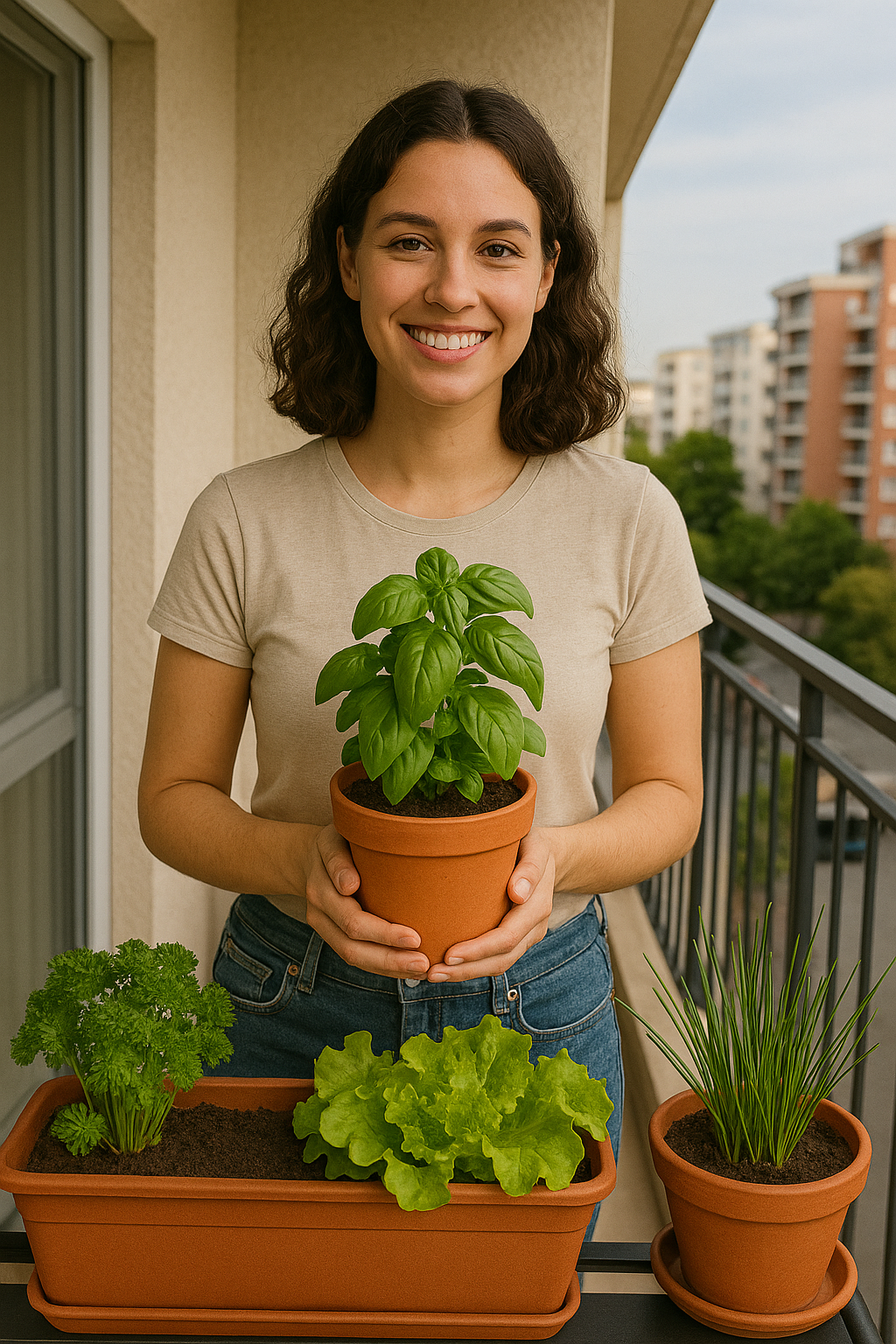Growing your own food may seem like something reserved for people with backyards, greenhouses, or sprawling garden beds—but that couldn’t be further from the truth. With a little creativity, apartment dwellers can grow a surprising number of edible plants indoors, right on a windowsill, balcony, or kitchen counter.
In this article, we’ll explore the easiest edible plants to grow in an apartment, how to care for them, and tips to get the most out of your indoor mini-garden.
Why Grow Edible Plants in an Apartment?
There are many reasons to bring edible greenery into your home, including:
- Fresh flavor: Nothing beats the taste of freshly picked herbs or vegetables.
- Cost savings: Growing your own produce reduces grocery bills over time.
- Sustainability: You cut down on packaging, transportation, and waste.
- Satisfaction: There’s something deeply rewarding about harvesting food you’ve grown yourself.
Even if you only grow a handful of herbs, the experience is worth it.
What Makes a Plant “Easy” to Grow Indoors?
Not every edible plant is suited to indoor life, especially in small apartments. The best plants for indoor growing share the following characteristics:
- Tolerate low to medium light
- Grow well in containers
- Have compact or vertical growth
- Require minimal space and maintenance
- Mature quickly or can be harvested continuously
Now, let’s dive into the top options for apartment gardeners.
1. Basil
Why It’s Easy:
Basil grows quickly, loves warm environments, and thrives in containers on sunny windowsills.
How to Grow:
- Needs 6–8 hours of light per day (a south-facing window is ideal).
- Water when the top inch of soil is dry.
- Pinch off flowers to encourage leafy growth.
Use It For:
Pasta dishes, pizza, salads, pesto.
2. Mint
Why It’s Easy:
Mint is virtually indestructible and can grow in a glass of water if needed. It spreads quickly, so one plant goes a long way.
How to Grow:
- Prefers partial light; great for kitchen counters.
- Keep soil moist but not soggy.
- Grows well in pots or jars.
Use It For:
Tea, cocktails, desserts, salads.
3. Green Onions (Scallions)
Why It’s Easy:
You can regrow green onions from store-bought leftovers. Just place the white root ends in water and watch them sprout.
How to Grow:
- Use a glass with a little water or pot in soil.
- Change water every few days if growing hydroponically.
- Trim as needed.
Use It For:
Garnishes, soups, stir-fries, tacos.
4. Lettuce
Why It’s Easy:
Loose-leaf varieties grow quickly and can be harvested over and over.
How to Grow:
- Needs at least 4–6 hours of light.
- Water regularly to keep soil consistently moist.
- Harvest outer leaves, allowing the center to keep growing.
Use It For:
Salads, sandwiches, wraps.
5. Cherry Tomatoes
Why It’s Easy:
While not as hands-off as herbs, compact cherry tomato varieties are well-suited for containers and give high yields in small spaces.
How to Grow:
- Needs 6–8 hours of direct sunlight.
- Use a deep container and stake the plant for support.
- Water deeply and consistently.
Use It For:
Snacking, pasta, sauces, salads.
6. Spinach
Why It’s Easy:
Spinach is a cool-weather crop that grows well indoors and can be harvested continuously.
How to Grow:
- Prefers cooler spots in indirect light.
- Water regularly and keep soil moist.
- Harvest young leaves for best flavor.
Use It For:
Smoothies, soups, omelets, salads.
7. Chives
Why It’s Easy:
Chives are hardy, compact, and regrow quickly after harvesting.
How to Grow:
- Needs 4–6 hours of light.
- Can thrive in smaller pots or even mason jars.
- Snip leaves at the base with scissors.
Use It For:
Potatoes, eggs, dips, sauces.
8. Thyme
Why It’s Easy:
This aromatic herb is drought-tolerant and grows slowly but steadily indoors.
How to Grow:
- Needs full sun—ideal for sunny windowsills.
- Allow soil to dry between waterings.
- Prune regularly to maintain shape.
Use It For:
Stews, meats, roasted vegetables, bread.
9. Parsley
Why It’s Easy:
Parsley grows slowly at first but becomes very productive once established.
How to Grow:
- Requires moderate light.
- Water when top of soil is dry.
- Trim often to promote bushy growth.
Use It For:
Garnishes, tabbouleh, chimichurri, marinades.
10. Peppers (Small Varieties)
Why It’s Easy:
Miniature and dwarf pepper plants thrive in containers and produce colorful fruits.
How to Grow:
- Needs full sunlight.
- Use a deep container with proper drainage.
- Water regularly and feed with organic fertilizer.
Use It For:
Salsas, stir-fries, pickling.
Tips for Success with Edible Indoor Plants
- Rotate plants weekly to ensure even light exposure.
- Use grow lights if your apartment lacks natural sunlight.
- Fertilize monthly with organic or indoor-plant-safe food.
- Keep an eye on humidity—herbs in particular prefer moderate humidity levels.
- Label your plants to avoid confusion as they grow.
- Harvest regularly to encourage new growth and avoid over-maturity.
The Joy of Growing What You Eat
Starting your own edible garden in an apartment is easier than most people think. Even if you only have a windowsill or a few feet of balcony, you can grow a satisfying variety of herbs and vegetables that add freshness and flavor to your meals.
It’s not just about saving money or having better-tasting food—it’s about reconnecting with nature, creating something from scratch, and enjoying the process. Whether you’re sipping mint tea from your own plant or tossing parsley into pasta, the rewards are rich and daily.
